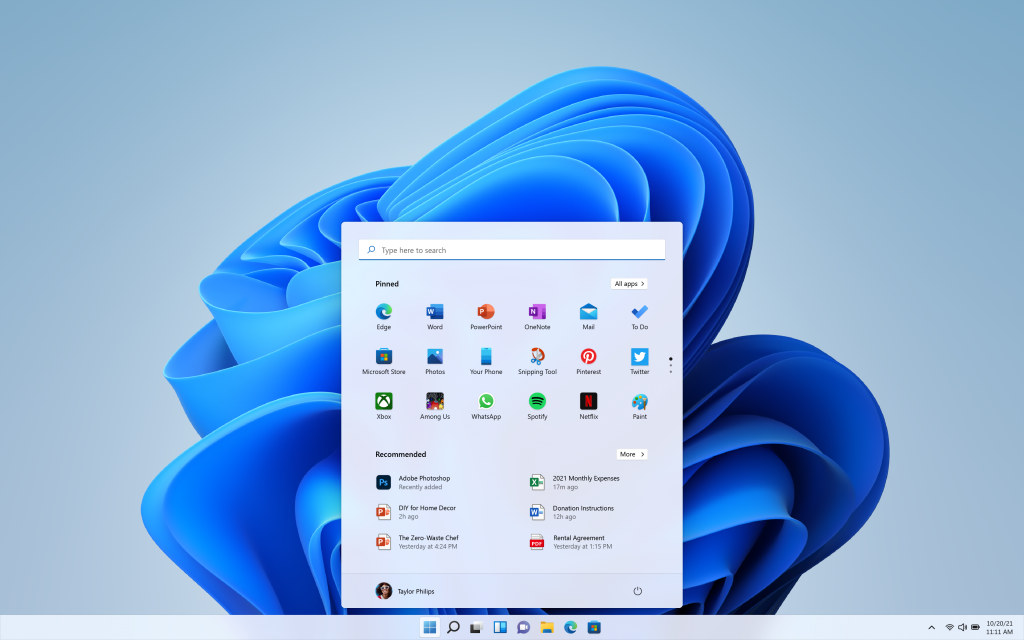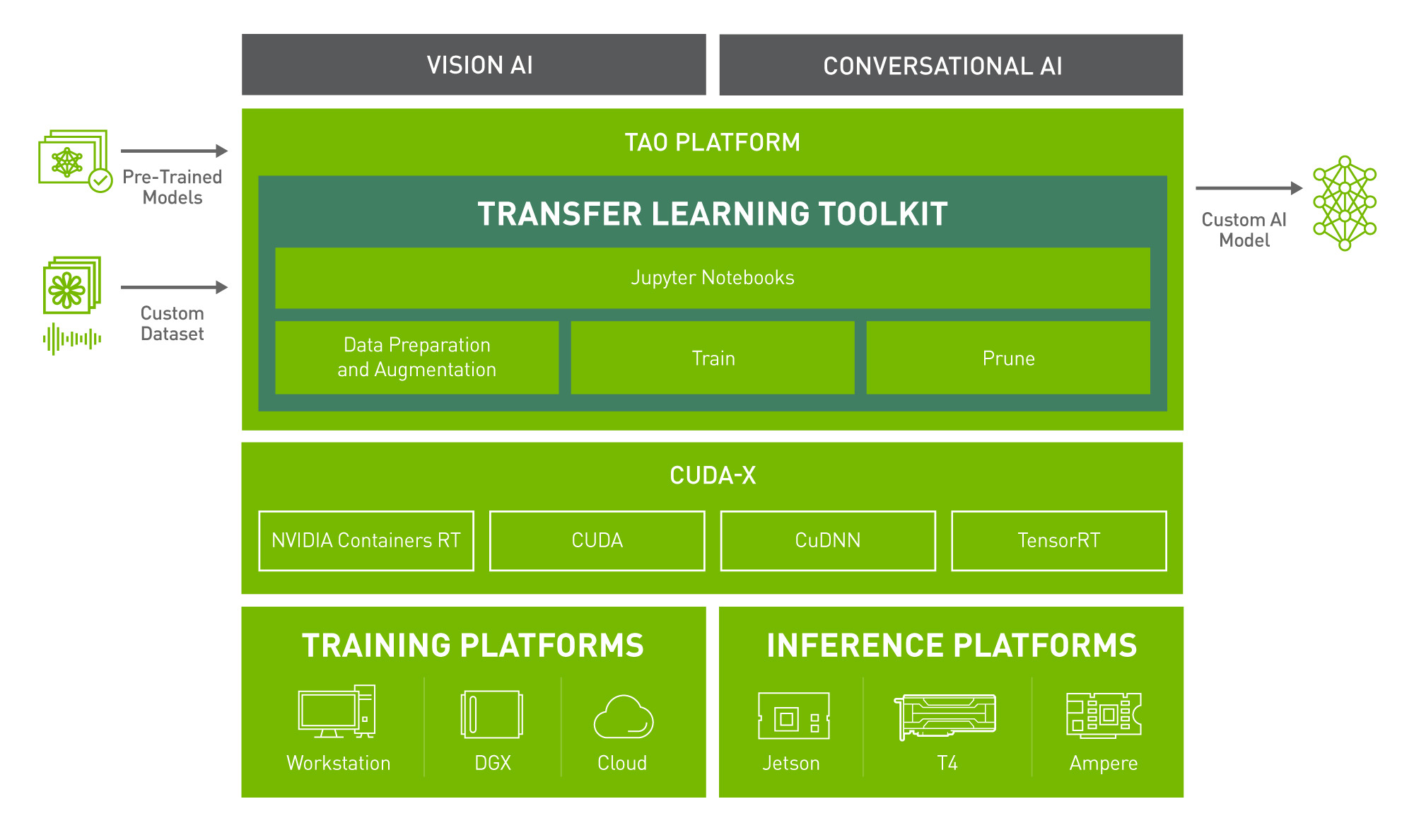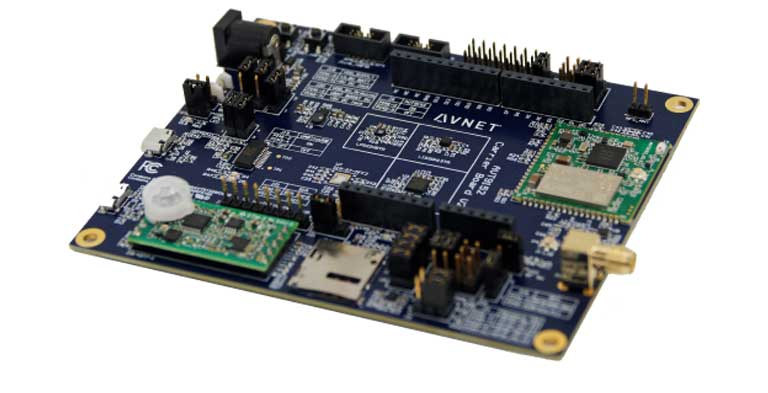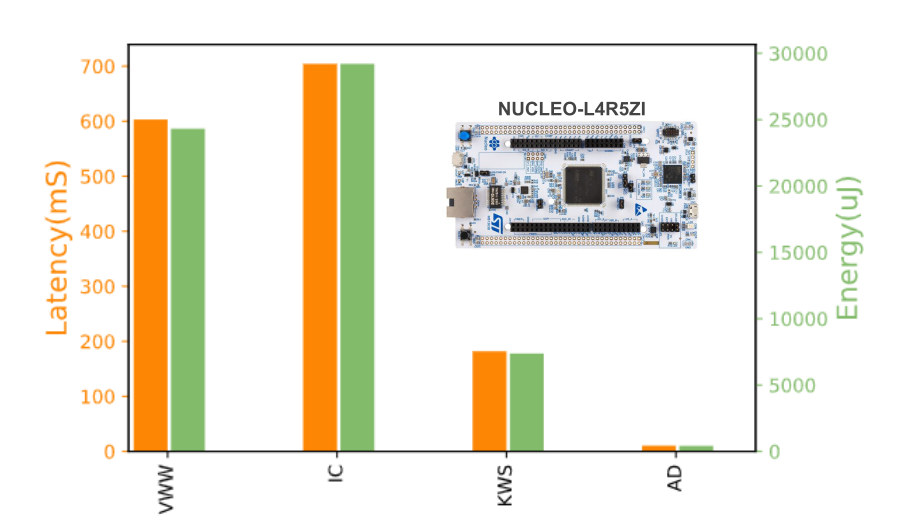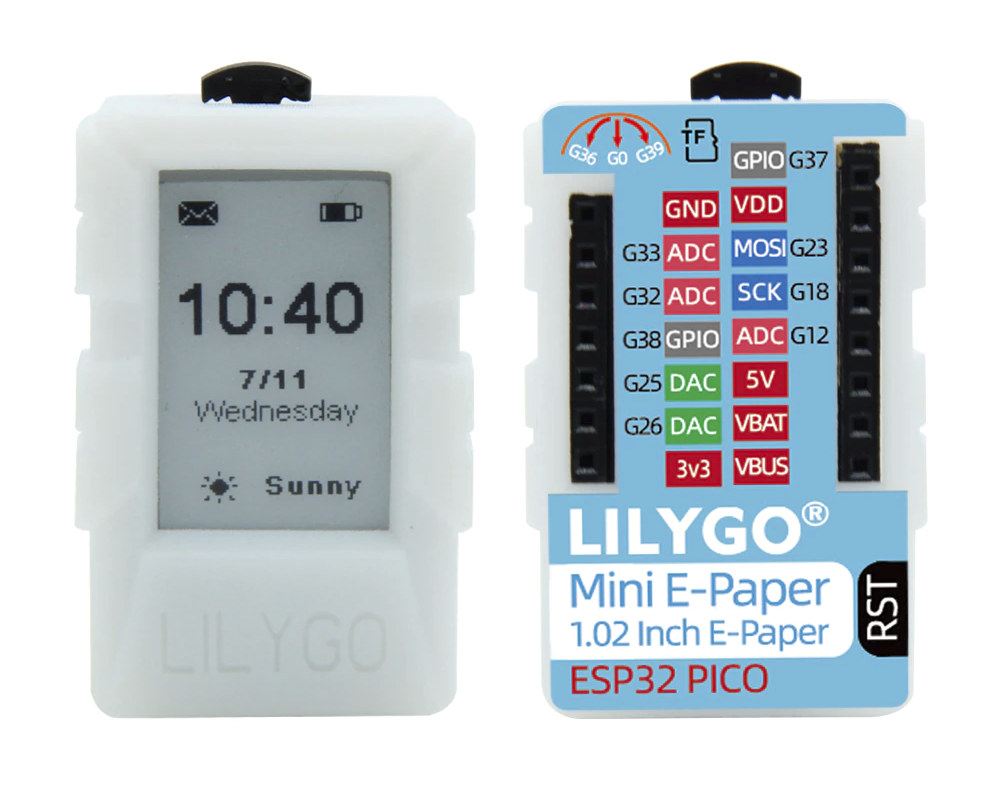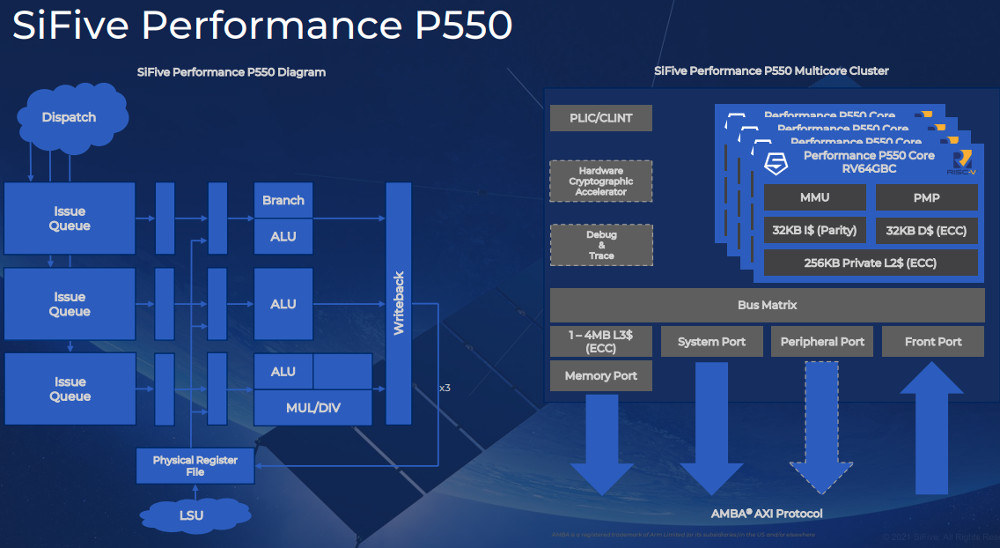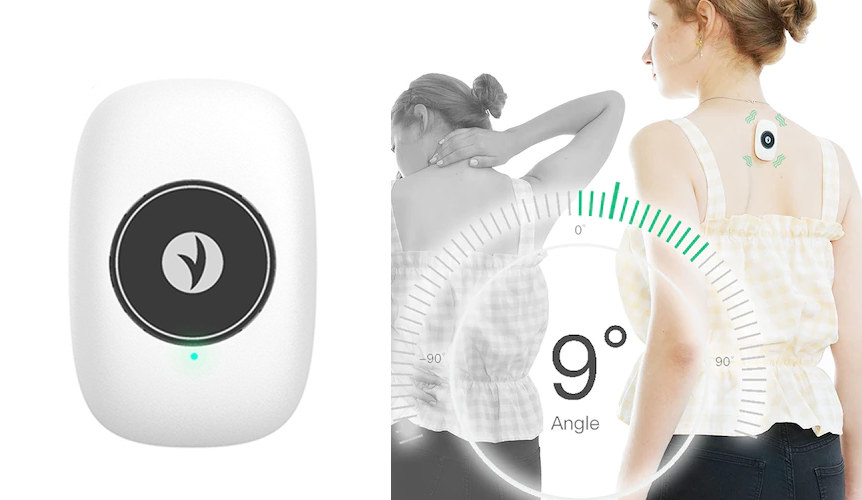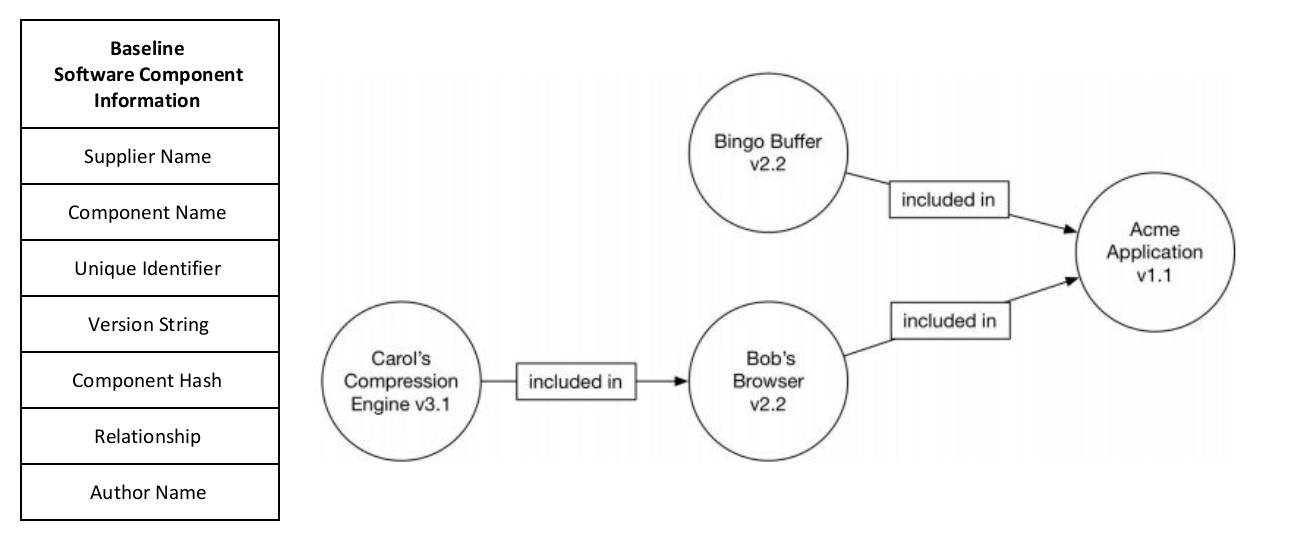As expected, Microsoft has formally announced Windows 11 operating system that’s basically Windows 10 with a new look, and some extra features such as Snap Layouts, Snap Groups, and Desktops to further improve the multitasking experience. Snap Layouts and Snap Groups will allow you to select pre-defined layouts to quickly arrange windows as you see fit, and you can define multiple “Desktops” for work, gaming, or school, etc… Other changes include Chat from Microsoft Teams integrated into the taskbar, new gaming features such as DirectX 12 Ultimate, Direct Storage for faster loading, or Auto HDR, a new Microsoft Store with support for Android apps through the Amazon Appstore, and AI-powered widgets to display useful information like calendar, weather, news, stock quotes, etc… There are also features that have become deprecated or pushed to the wayside with, for example, Cortana not used anymore during installation and not pinned to the taskbar, […]
NVIDIA TAO Transfer Learning Toolkit (TLT) 3.0 released with pre-trained models
NVIDIA first introduced the TAO (Train, Adapt and Optimize) framework to eases AI model training on NVIDIA GPU’s as well as NVIDIA Jetson embedded platforms last April during GTC 2021. The company has now announced the release of the third version of the TAO Transfer Learning Toolkit (TLT 3.0) together with some new pre-trained models at CVPR 2021 (2021 Conference on Computer Vision and Pattern Recognition). The newly released pre-trained models are applicable to computer vision and conversational AI, and NVIDIA claims the release provides a set of powerful productivity features that boost AI development by up to 10 times. Highlights of TAO Transfer Learning Toolkit 3.0 Various computer vision pre-trained models for Computer vision: Body Pose estimation model that supports real-time inference on edge with 9x faster inference performance than the OpenPose model. Emotion recognition Facial landmark License plate detection and recognition Heart rate estimation Gesture recognition Gaze estimation […]
Avnet AVT9152 – nRF52840 & nRF91 IoT module and devkit
Avnet AVT9152 is an IoT module and development kit that combines two Nordic Semi wireless solutions, namely nRF52840 Bluetooth 5.2/LE multiprotocol SoC and nRF91 IoT cellular system-on-module with NB-IoT, LTE-M, and GPS connectivity. The module supports Avnet’s enterprise-ready IoTConnect Platform, and the development kit combines with IoT module with a 3-axis accelerometer, a 3-axis gyroscope, as well as pressure, temperature, relative humidity, ambient light, and motion (PIR) sensors to help with the development of IoT applications such as tracking devices, vending machines, points-of-sale, smart buildings, industrial IoT, and more. Avnet AVT9152 module – nRF52840 + nRF91 Key features and specifications: Wireless SoC/SiP Nordic Semi nRF9160 Cortex-M33 based system-in-package (SiP) with LTE-M/NB-IoT global carrier certification for LPWAN connectivity; support for power save mode, PSM and eDRX Nordic Semi nRF52840 Cortex-M4F microcontroller with Bluetooth 5.0 and Bluetooth LE for short-range communication Flexible LTE and GPS antenna options 50x castellated holes with UART, […]
Benchmarking TinyML with MLPerf Tiny Inference Benchmark
As machine learning moves to microcontrollers, something referred to as TinyML, new tools are needed to compare different solutions. We’ve previously posted some Tensorflow Lite for Microcontroller benchmarks (for single board computers), but a benchmarking tool specifically designed for AI inference on resources-constrained embedded systems could prove to be useful for consistent results and cover a wider range of use cases. That’s exactly what MLCommons, an open engineering consortium, has done with MLPerf Tiny Inference benchmarks designed to measure how quickly a trained neural network can process new data for tiny, low-power devices, and it also includes an optional power measurement option. MLPerf Tiny v0.5, the first inference benchmark suite designed for embedded systems from the organization, consists of four benchmarks: Keyword Spotting – Small vocabulary keyword spotting using DS-CNN model. Typically used in smart earbuds and virtual assistants. Visual Wake Words – Binary image classification using MobileNet. In-home security […]
LILYGO Mini E-Paper Core combines ESP32 with 1.02-inch ePaper Display in 3D printed enclosure
LILYGO Mini E-Paper Core is another ESP32-based e-Paper display by LILYGO, but it’s a really tiny 1.02-inch e-Paper display housed in a 3D printed enclosure that reminds me of M5Stack Core with a 2-inch TFT LCD. The tiny low-power display also offers a MicroSD card socket, a reset button, a three-way user button, as well as headers for GPIOs, ADC, DAC, SPI, and more. LILYGO Mini E-Paper Core specifications: Wireless SiP – ESP32-PICO-D4 system-in-package with ESP32 dual-core processor, 4MB Flash, 2.4 GHz WIFi 4 & Bluetooth connectivity Storage – MicroSD card socket Display – 1.02-inch e-paper display with 128×80 resolution USB – 1x USB Type-C for power and programming Expansion 7-pin 2.54mm pitch header with 5x GPIO, 2x ADC, 2x DAC, 3.3V, and GND 8- pin 2.54mm pitch header with 4x GPIO, SPI, 1x ADC, 5V, VBUS, VBat, and GND Misc – Three-way toggle button connected to G36, G0, […]
SiFive Performance P550 is the fastest 64-bit RISC-V processor so far
SiFive has announced two RISC-V “Performance” cores with Performance P550 that should be the fastest 64-bit RISC-V processor so far with a SPECInt 2006 score of 8.65/GHz, as well as a Performance P270 Linux capable processor with full support for the RISC-V vector extension v1.0 rc. SiFive Performance P550 P550 highlights: RISC-V RV64GBC ISA 13 stage, 3-issue high-performance out-of-order pipeline Supports multicore coherence with up to 4 cores in a core complex Private 32KB+32KB L1 cache and a private 256KB L2 cache per core Up to 4MB L3 cache in a four-core cluster SPECint 2006 – 8.65/GHz 2.4 GHz in 7nm with a footprint of less than 0.25 mm SiFive compares the Performance P550 core to Arm’s Cortex-A75 with higher performance in SPECint2006 and SPECfp2006 integer/floating-point benchmark, all a much smaller area which would enable a quad-core P550 cluster on about the same footprint as a single Cortex-A75 core. There […]
Posture correction smart sensor helps you sit or stand upright
It’s easy to adopt a bad posture either while sitting in front of a computer or while walking and your mobile, and over time this may lead to unaesthetic and/or painful postural disorders. To solve this issue, a posture correction smart sensor may be used in place of a posture belt with what looks like a GPS tracker placed on the back of the patient, and which notifies bad postures by vibrating and to your smartphone depending on a user-configured angle range. Specifications listed for the posture-correction-smart-sensor: Sensor – Unnamed Bosch gravity sensor Connectivity – Bluetooth 4.2 Misc Medical-grade gel patch to attach the device to the bag Vibration motor Battery – 200mAh; 30 minutes charge good for about 5 days when using it for about 8 hours per day Dimensions – 6 x 4 x 1.2 cm Weight – 16 grams. The device ships with a micro USB cable […]
Software bills of materials (SBOM) could help improve cybersecurity
There have been some widely publicized hacks in recent months including the SolarWinds hack and the Colonial pipeline cyber attack. Those two were particularly costly and disruptive, and the US government issued an executive order that lists some of the requirements to stretch cybersecurity. Since there are many attach vectors, the list of requirements is fairly long, but one that caught my eyes in the “Enhancing Software Supply Chain Security” section reads as follows: (vii) providing a purchaser a Software Bill of Materials (SBOM) for each product directly or by publishing it on a public website; Bills of materials (BoM) are commonly used for hardware design, but the idea behind a software bill of materials is to make sure outdated software libraries with known vulnerabilities are not included in a specific program. The 2021 Open Source Security and Risk Analysis (OSSRA) report exposes vulnerabilities and license conflicts found in more […]


